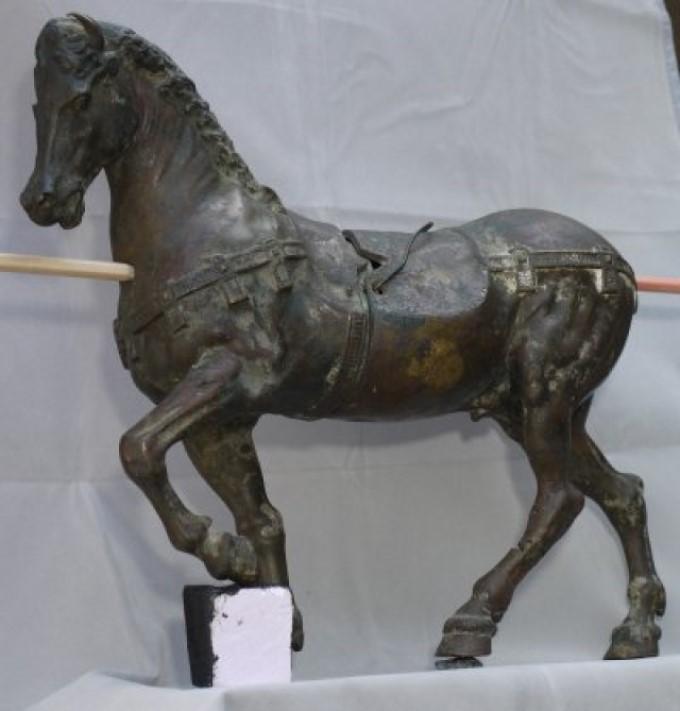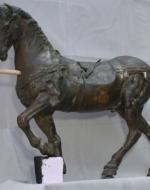Model of the Two Piece Design and Tension Rod of the Colleoni Equestrian Monument
Created by Juliana Sarisky on Fri, 05/17/2019 - 18:32
Description:
In Karlskrona, Sweden, a model of the Colleoni monument was created to depict the believed construction of the horse. The model depicts the two-piece split of the horse at the rider's saddle as well as the tension been traveling from the top of the front harness through the back of the tail. This specific construction would allow for the horse's inner structure removal and casting in two pieces. This two-part casting saves bronze, money, decreases the weight of the horse, and improves stability (Kulenovic and von Platen).
Sources:
Kulenovic, R., & Von Platen, F. (n.d.). Questions Concerning the Equestrian Statue in Remembrance of the Condottiere Bartolemeo Colleoni in Venice Created in the Workshop of Andrea Del Verrocchio. Retrieved from http://www.museumldv.com/venice.htm
Copyright:
©THE KULENOVIC COILLECTION


